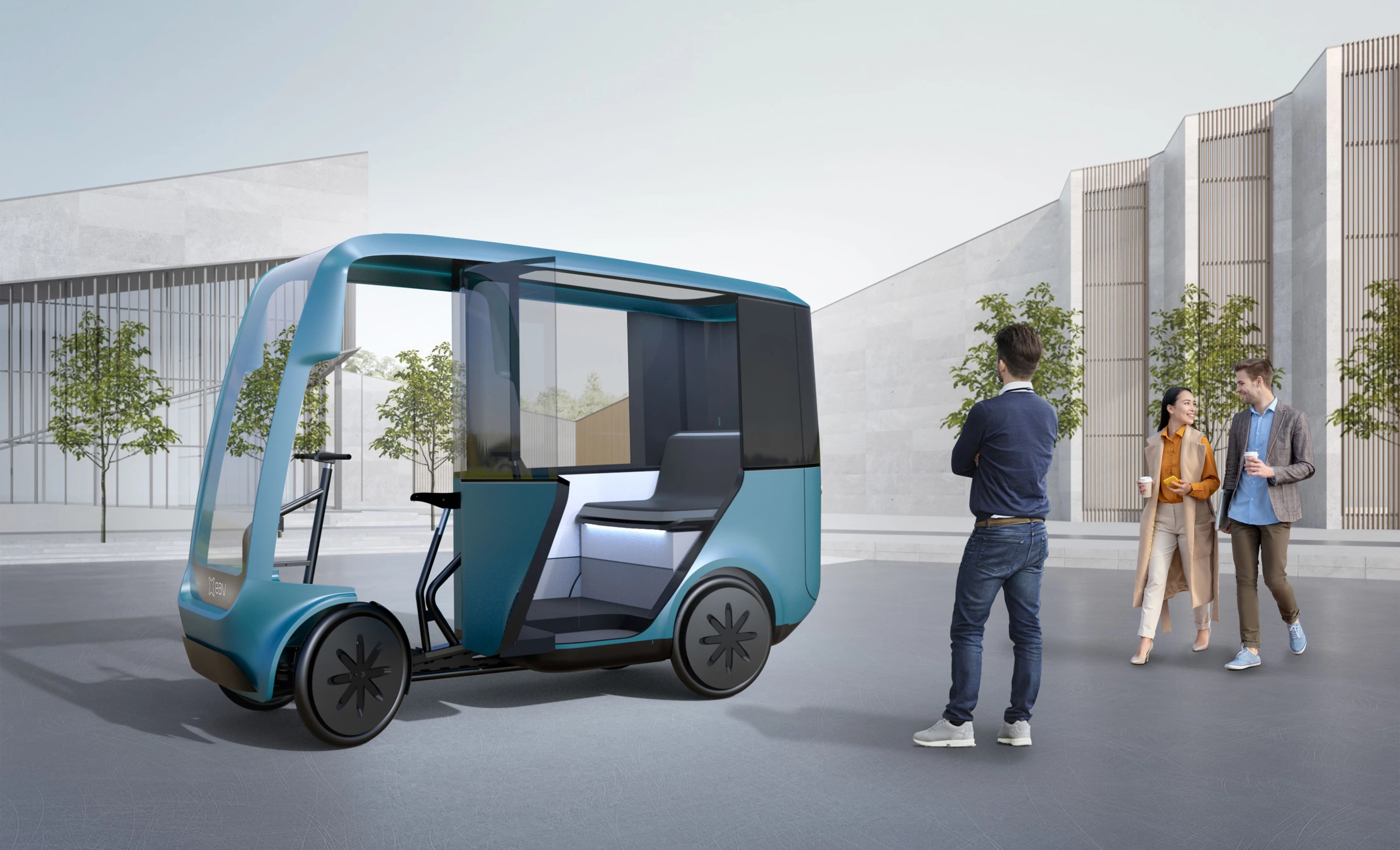UK outfit Electric Assisted Vehicles (EAV) has caught our eye over the past year or so with an interesting electric-assist quadcycle vehicle for urban environments. While its offerings so far have focused on transporting cargo, the company is now branching out into passenger vehicles with its EAV Taxi, built for ferrying people around congested city centers.
EAV’s family of urban cargo vehicles use a pedal-assist electric drive platform for zero-emissions travel, with the lineup recently expanding to include refrigerated cargo holds and flatbed options resembling the back of a pickup truck.
The newly announced EAV Taxi is still pedal -assist and built atop the same chassis, but is designed to carry up to two passengers rather than cargo in its rear compartment. It is fitted out with full suspension and side doors, while memory foam seating is found inside, along with a video display for tracking journey information.
A luggage compartment is tucked away beneath the seats and can be accessed from either the rear or the side, while the cabin also features heating and cooling to keep the internal temperature to comfortable levels.
The entire vehicle measures 2.7 m (8.8 ft) long, 2 m tall (6.5 ft) and just 1 m (3.2 ft) across, while the top pedal-assisted speed is listed as 25 km/h (15.5 mph). EAV sees this as a vehicle highly suited to short journeys in cities such as London, where it says around 200,000 individual taxi rides are taken every day, usually covering less than five miles (8 km) and 65 percent of which carry just one passenger.
The company believes the EAV Taxi could not only ease congestion, but have a big impact on air quality and energy usage, even when compared to electric cars and trucks that are far larger and heavier.
“We’re 90 percent lighter than any hybrid or electric car and, if we just replaced one hybrid Uber with an EAV Taxi, we would save about 9.2 metric tons of carbon dioxide emissions in one year alone,” says Nigel Gordon-Stewart, Executive Chairman at EAV. “Our energy usage is a fraction of an electric taxi and we don’t need an infrastructure to charge our batteries, just a normal plug socket.”
According to EAV, the first prototype Taxi will be produced in November 2020, with plans to kick off deliveries in the spring (Northern Hemisphere) of 2021.
Source: EAV




